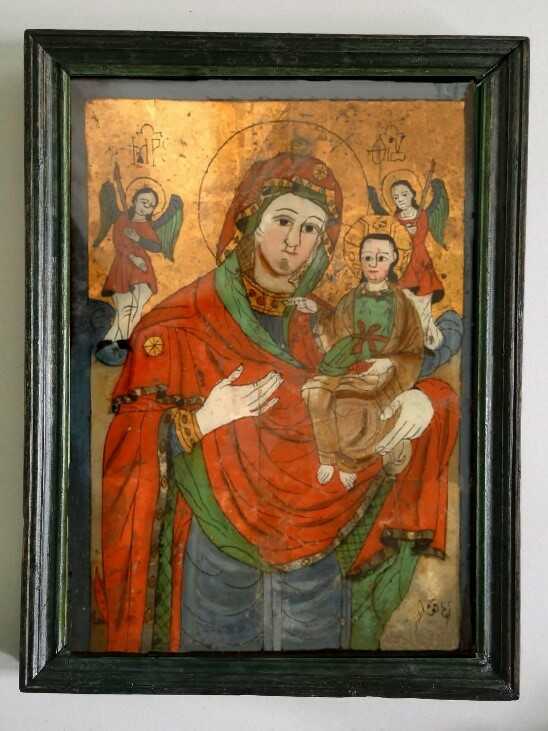Preparing the objects of the exhibition within the project “The Church of Horea – a heritage for the future. Valuing an 18th century architectural monument through Virtual Reality ”, a project made by the Ethnographic Museum of Transylvania, together with the Technical University of Cluj-Napoca and the Norwegian association NUDA AS, involves a laborious, long and meticulous work, done by the curators and restorers of the museum, those talented specialists with a complex training, unknown to the visiting public.
The restoration of a cultural asset, in general, a way to extend the life of that object, must be done by a certified restorer, a specialist with a thorough, theoretical and practical training.
The restoration of an icon on glass aims to restore the coherence of the original ensemble, with strict observance of the rules and principles of restoration: authenticity, compatibility, reversibility.
From the categorical diversity of cultural goods exhibited in the exhibition, we will present, firstly, the restoration of a glass icon “Mother of God with the Child”, restored by Maria Tonca – tempera painting restorer and Ioan Butnariu – polychrome wood restorer within the Museum Laboratory of conservation-restoration.
- Icon theme: Mother of God with the Child;
- Attribution: Nicula;
- Dated: 1815;
- length: 64.2 cm;
- width: 49 cm.
Technique: outline drawn with ink on the back of the glaze (thin, irregular glass, executed by hand) with the pen, after a model; tempera painted surfaces; gold foil glued to the background; the resinous wood frame is profiled and painted green and brown.
State of preservation: Manufactured glass, with the role of support and protection for the color film, is broken into 5 fragments that are kept. In the middle area is missing a piece of glass of approx. 1 cm2. A piece of glass was interposed between the original support and the folding glass. The fragments of the glaze were held together with the help of the paper glued over the painted layer, entraining it. The painted layer was transposed on this paper. We deduce that this intervention was made in 1942, because this year is also written on glued paper.
Restoration was difficult because the support glass is large (42.5 cm / 58 cm), wavy (the difference in plane being 11 mm), uneven in thickness (in some areas less than 1 mm). After consolidating the painted layer, we glued the fragments, we filled the missing support with resin. For additional mechanical strength we put the icon over a piece of transparent and rigid plexiglass, in a portable wooden frame. The glass was fixed with strips of felt and wooden elements fastened to the frame with screws. This box was necessary to check the fit of the fragments on the painting transposed on paper and the retouching, without straining the fragile icon. After gluing the color layer, the paper was mechanically thinned. After gluing the fragments, the plane difference was reduced by 5 mm.

Icon before restoration 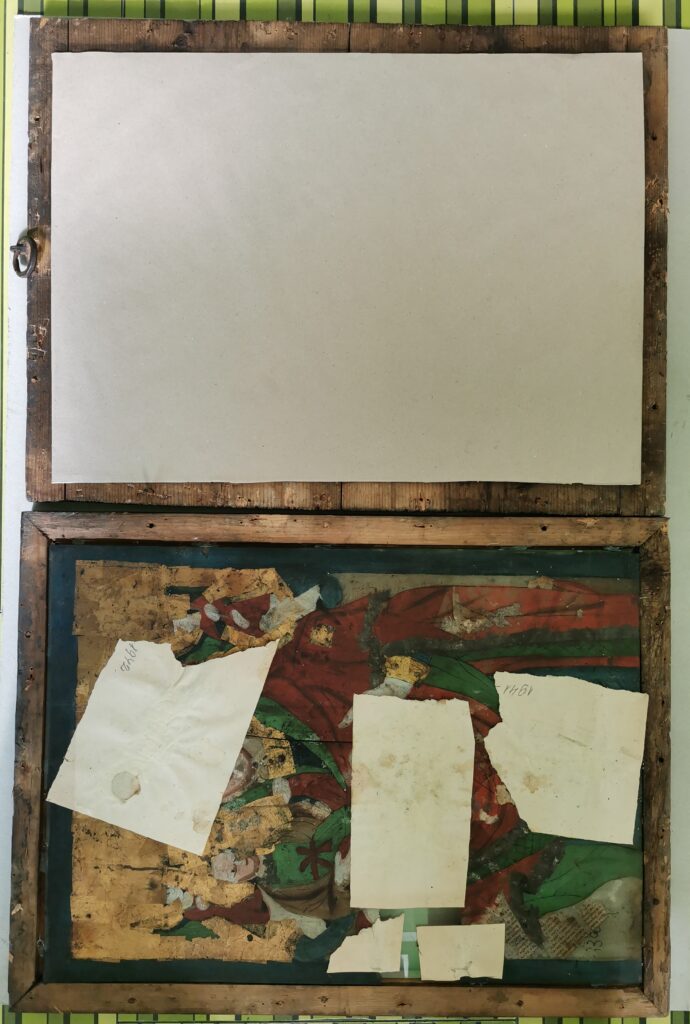
Disassembly assembly 
Disassembly assembly 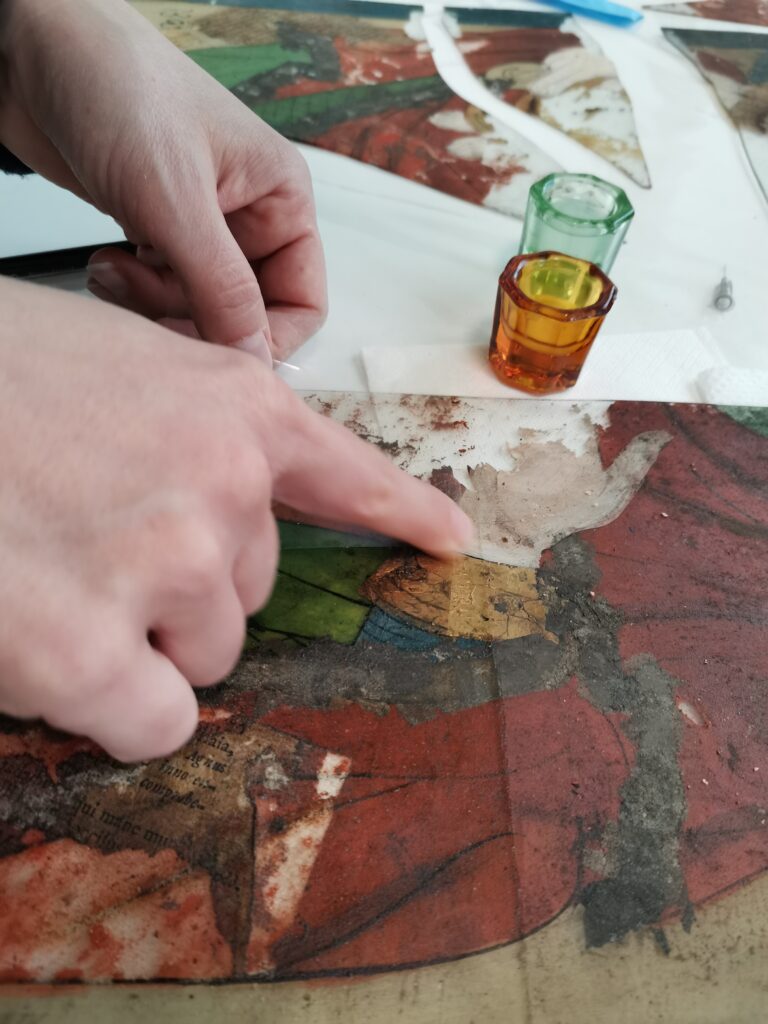
Consolidation 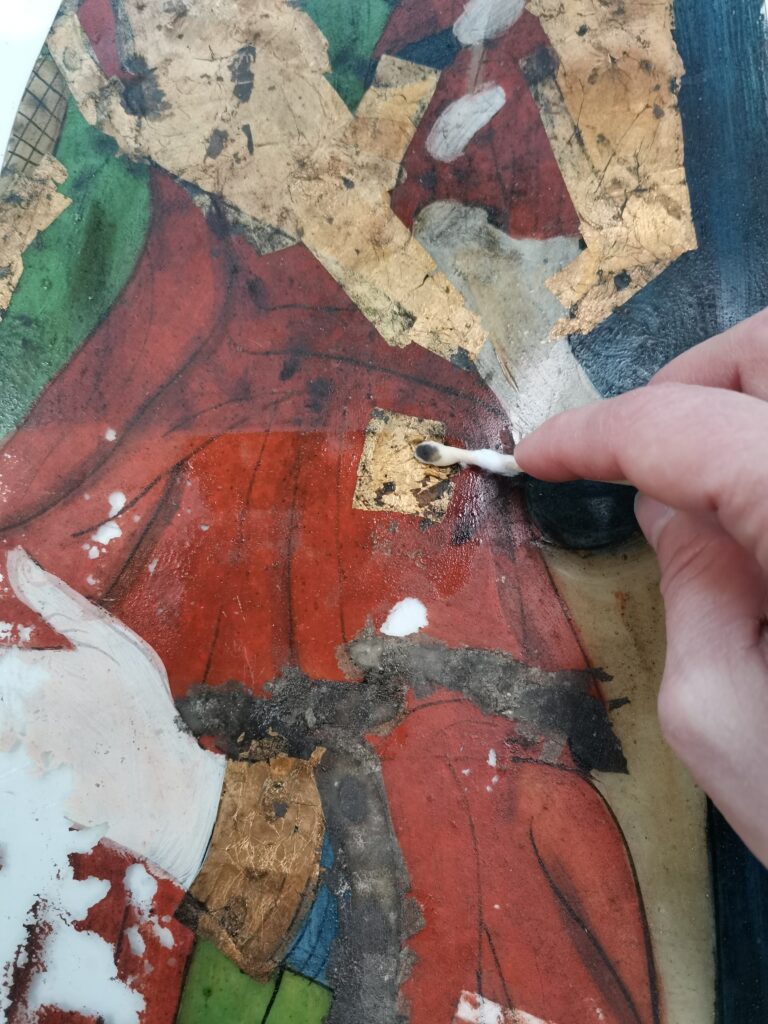
Cleaning 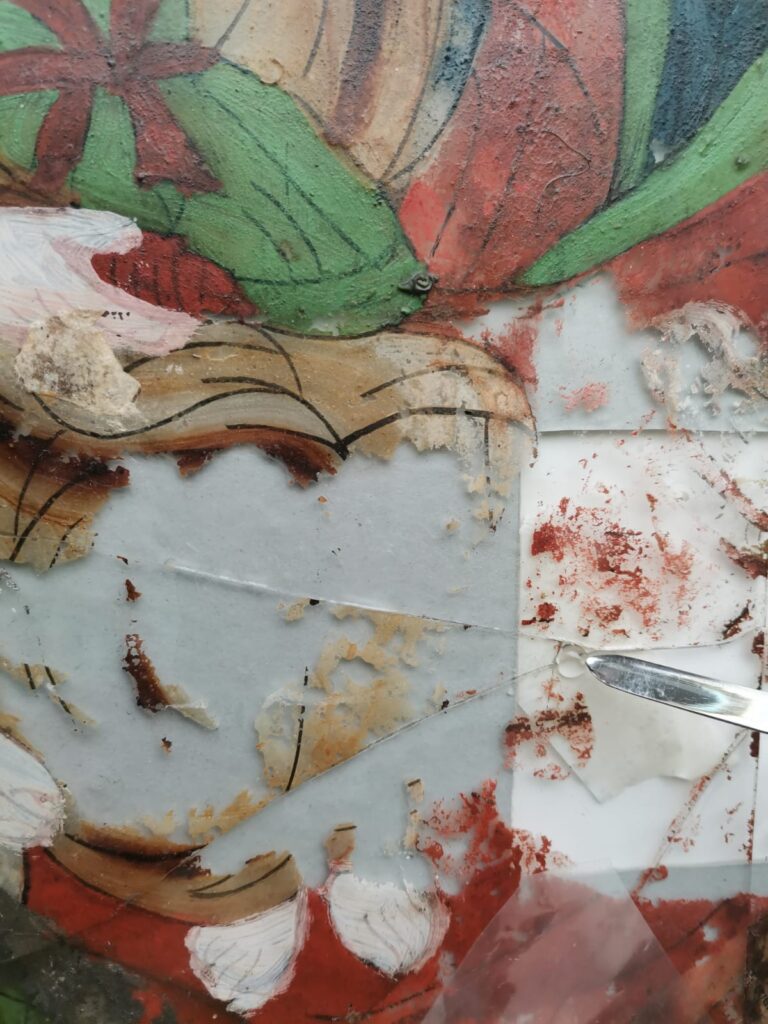
Paste fragments 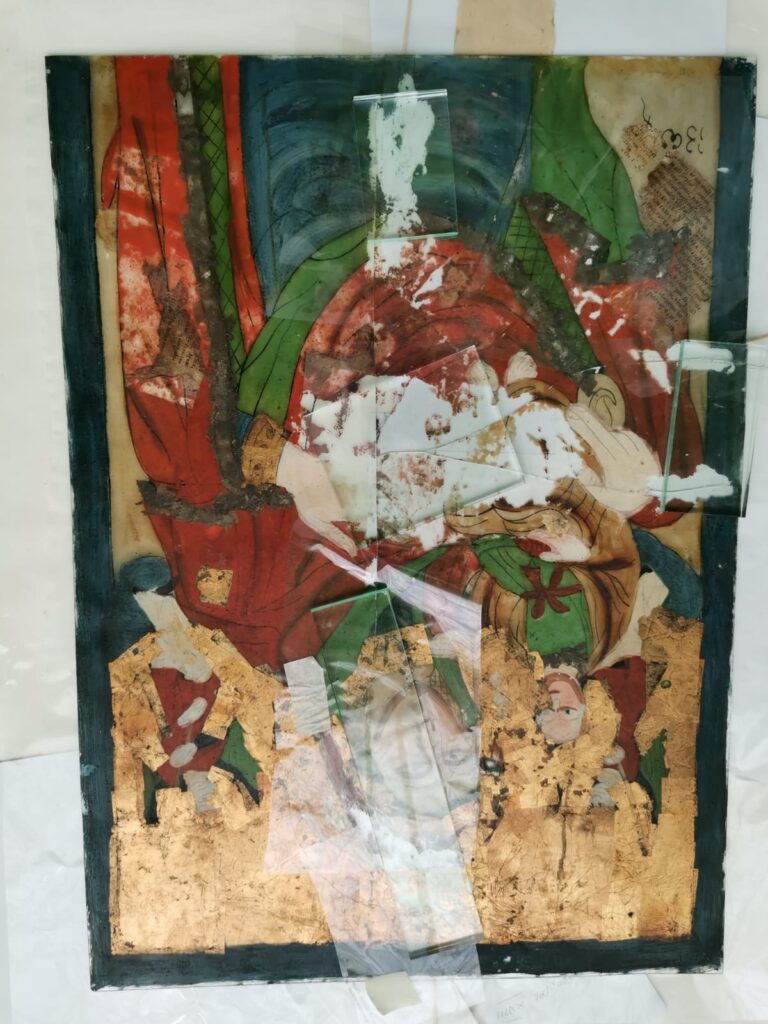
Resin filling of the support 
Preparing the area with rigid support for the perfect positioning of the edges 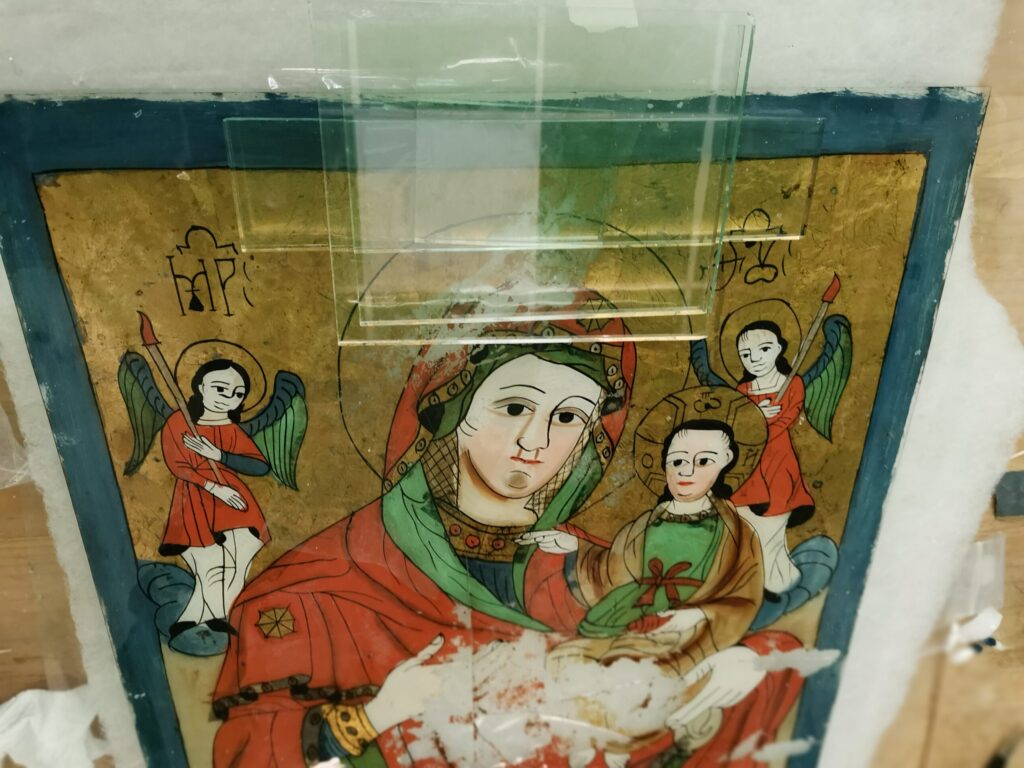
Press 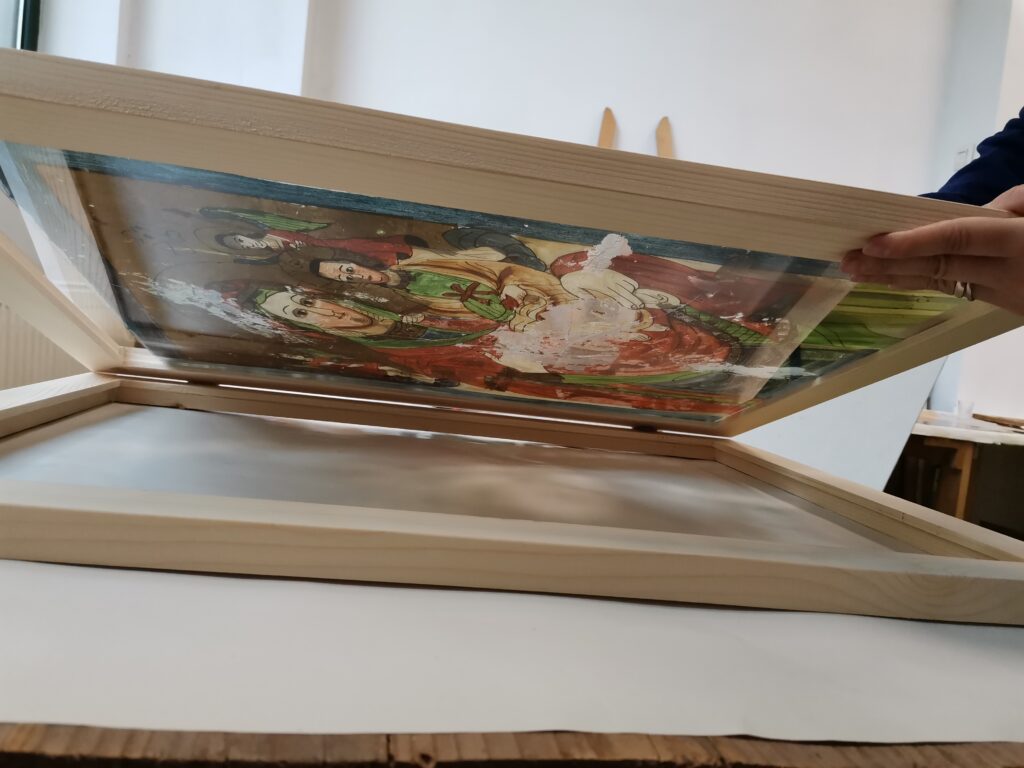
Integration; matching and gluing the paper on which the painted layer was transferred 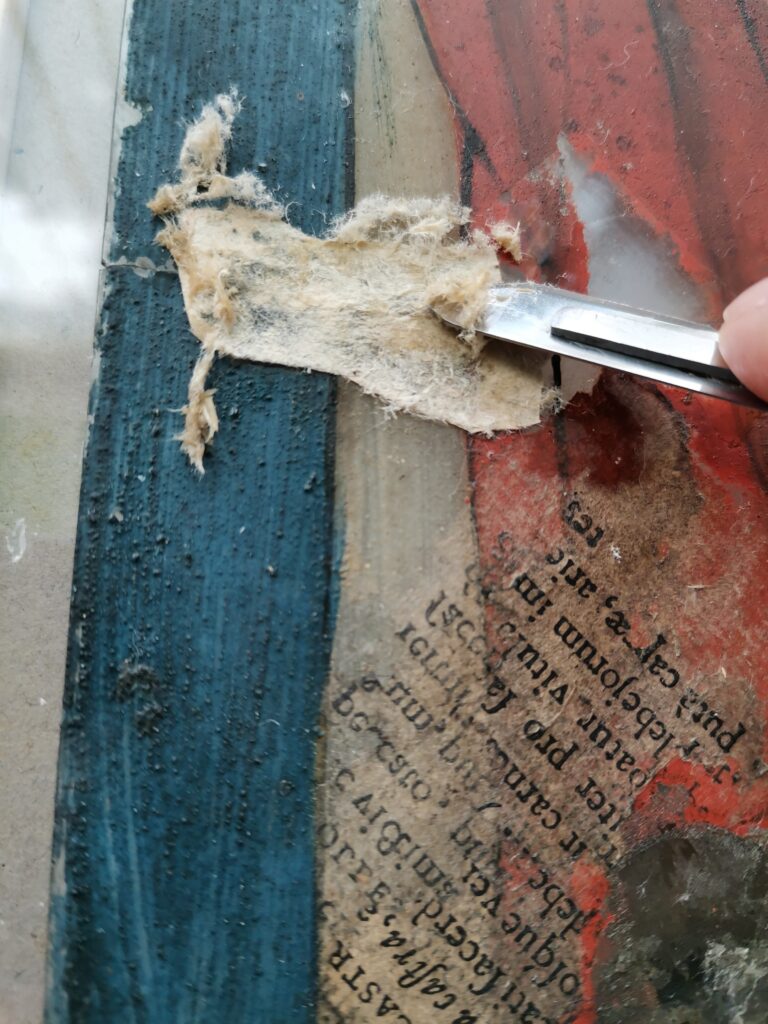
Thinning the paper after gluing the painted layer 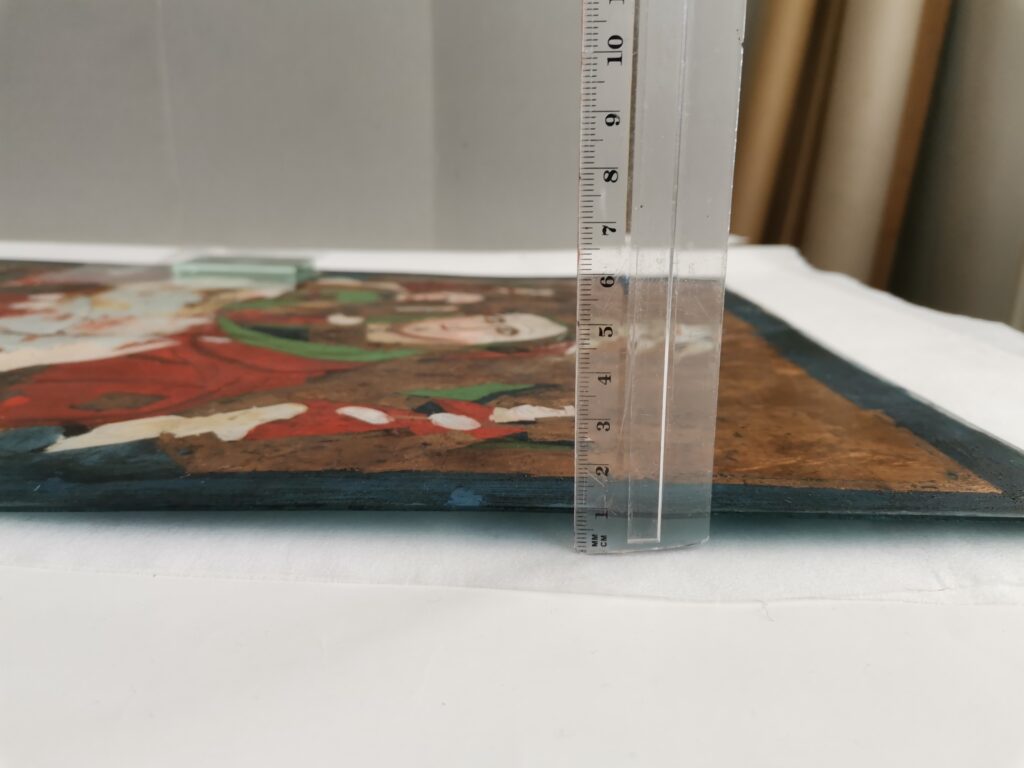
Difference of plane during the gluing of the fragments 
Difference of plane after gluing the fragments 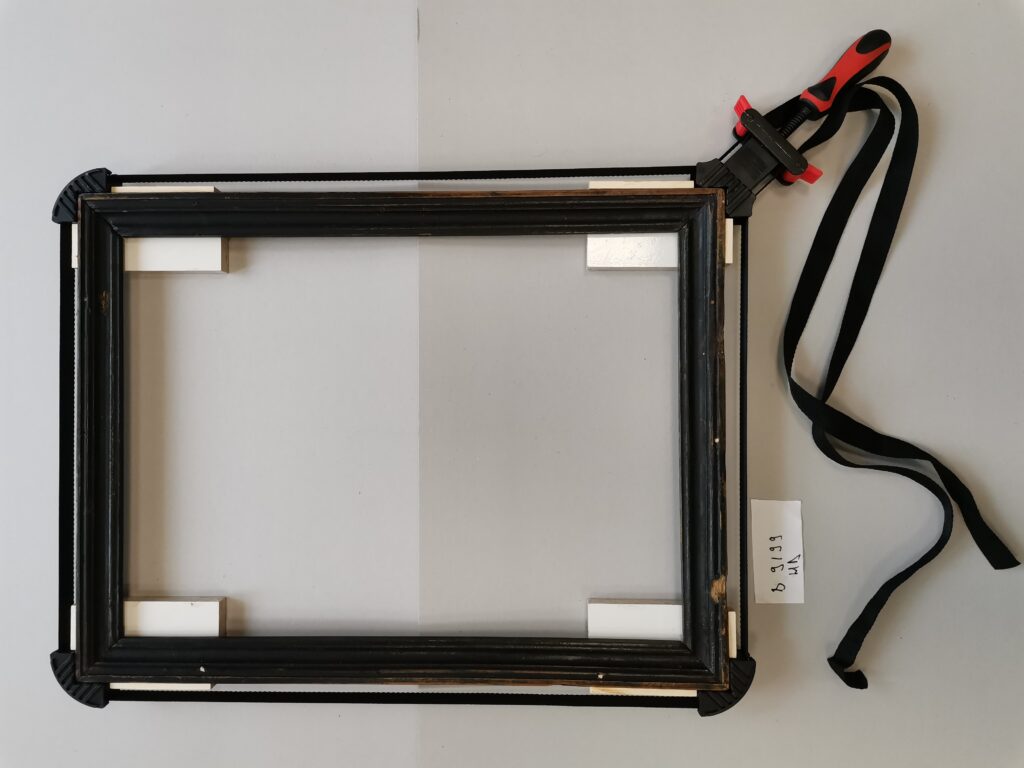
Frame restoration 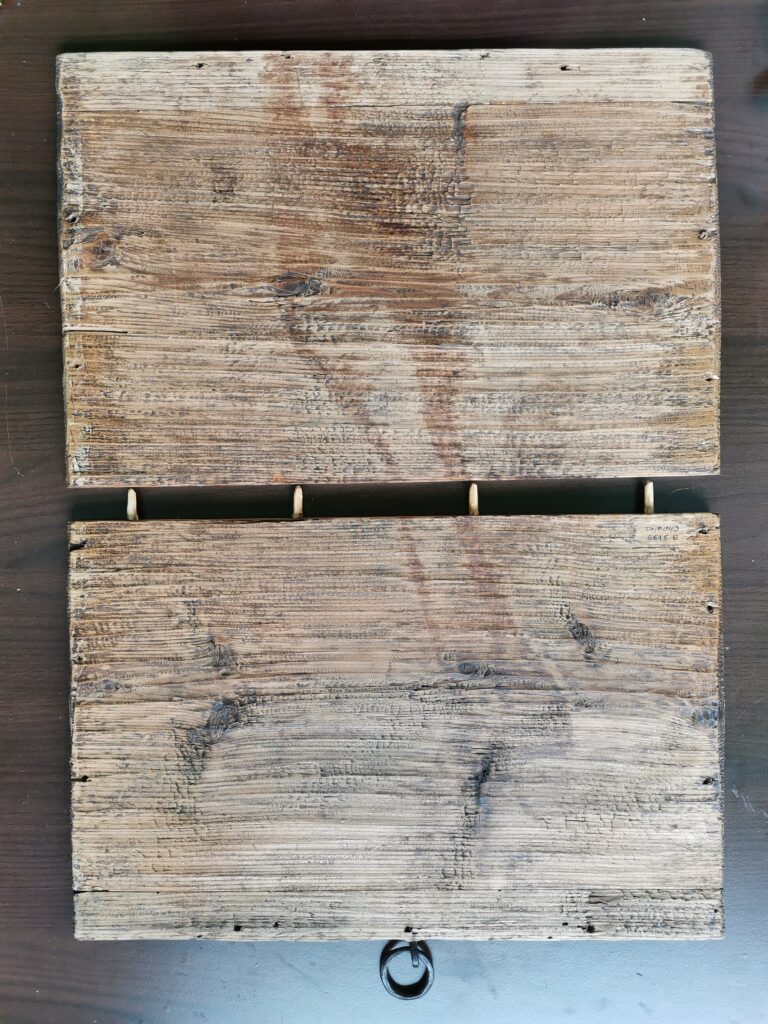
Cover restoration 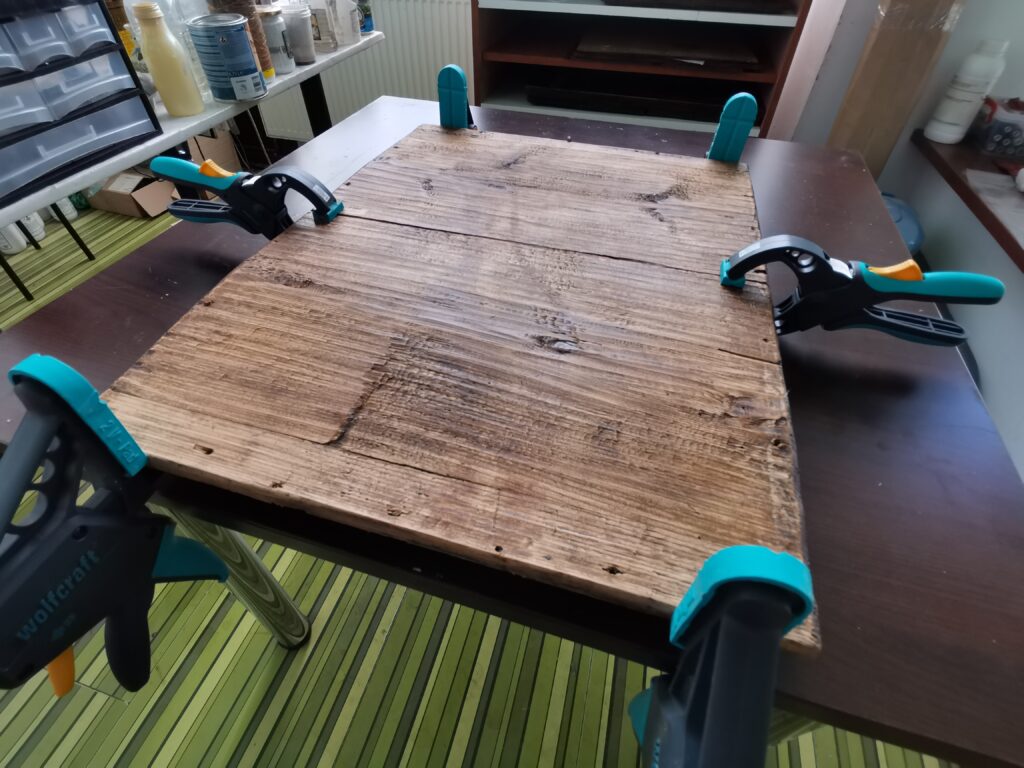
Gluing the lid 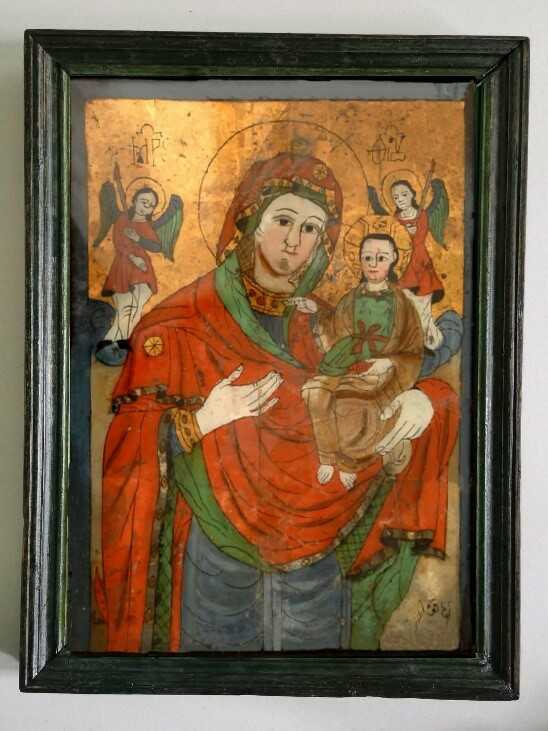
Icon after restoration
